Views : 382
Author : Eileen
Update time : 2025-03-15 13:46:49
Beyond Cotton: The Next Generation of Eco-Fabrics Revolutionizing Comestic Bag
In an era where sustainability is no longer optional but essential, the beauty industry is undergoing a transformative shift. Consumers are demanding products that align with their eco-conscious values, and beauty accessories—eco-friendly cosmetic bags, eco-friendly jewelry boxes, eco-friendly toiletry bags—are at the heart of this change. At Rivta, we’re leading the charge by crafting sustainable, stylish solutions that don’t compromise on quality or functionality.
Eco-fabrics like Pinatex, apple leather, and pineapple leather are redefining beauty accessories, offering innovative alternatives to traditional materials like cotton and leather. These fabrics minimize environmental harm, support ethical production, and deliver unique benefits that resonate with today’s discerning consumers. In this blog post, we’ll dive into what makes a fabric truly sustainable, explore the most promising eco-fabrics for beauty accessories, and highlight why adopting these materials is a game-changer for your brand.
What Makes a Fabric Truly Sustainable?
Sustainability in fabrics hinges on two critical pillars: environmental impact and ethical production. For brand leaders looking to meet green goals and consumer expectations, understanding these criteria is key to making informed decisions.
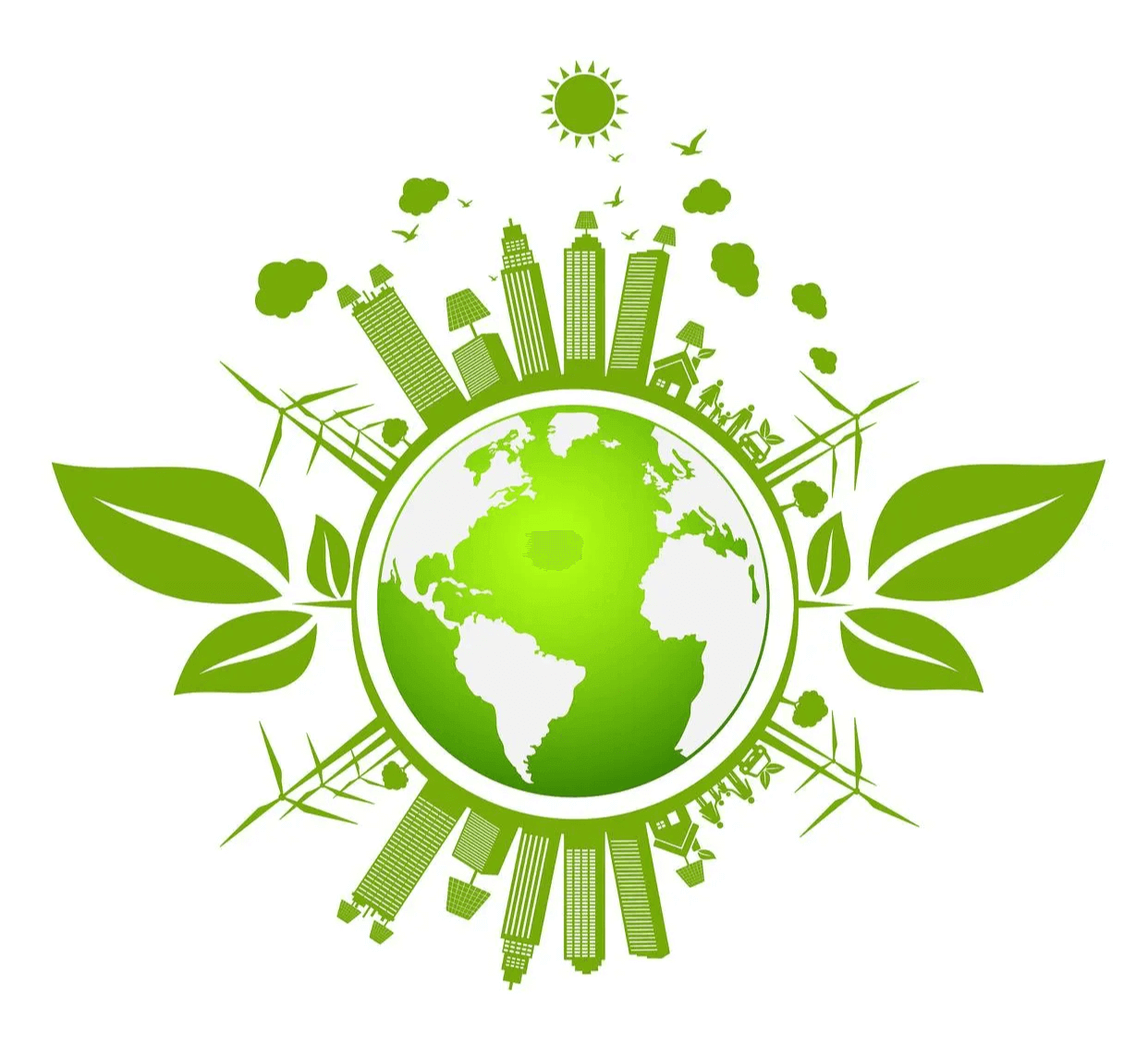
Environmental Impact Factors
Sustainable fabrics are designed to tread lightly on the planet throughout their lifecycle. Here’s what sets them apart:
- Biodegradability: These materials decompose naturally, leaving no harmful residues behind. Imagine a cosmetic bag that returns to the earth gracefully instead of lingering in a landfill for decades.
- Renewable Resources: Sourced from naturally replenished materials like plants, eco-fabrics reduce reliance on finite resources. Pinatex, for example, transforms pineapple leaves—otherwise discarded—into a durable, stylish material.
- Low Carbon Footprint: From production to transport, sustainable fabrics prioritize energy efficiency and lower greenhouse gas emissions. Local processing, as seen with many eco-fabrics, cuts down on transportation emissions—a small choice with a big impact.
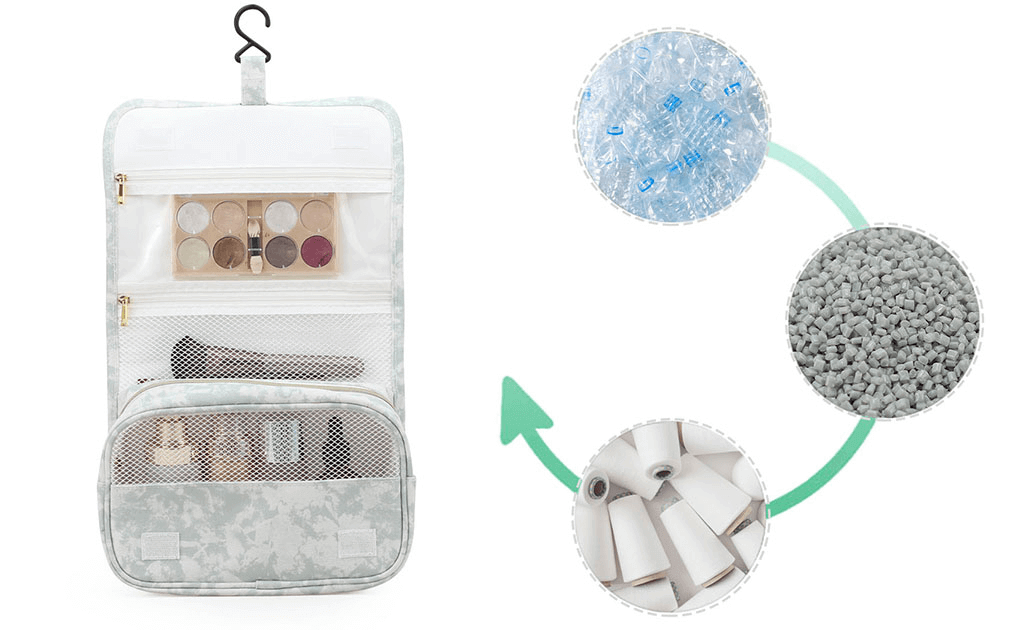
At Rivta, we prioritize materials that align with these principles, helping your brand reduce its environmental footprint without sacrificing performance.
Ethical Production Standards
Sustainability isn’t just about the planet—it’s about people too. Ethical production ensures that the hands behind your products are treated with respect and fairness:
- Fair Trade Practices: Workers earn fair wages and operate in safe conditions, fostering thriving communities. Brands like Terra Thread exemplify this with their organic cotton sustainable comestic bags.
- Transparency: Openly sharing supply chain details builds trust with consumers who value accountability. At Rivta, we’re committed to full transparency, so you know exactly where your products come from.
- Community Support: Sustainable brands often invest in local education and skill development. By choosing eco-fabrics, you’re supporting a supply chain that uplifts people, not just profits.
Adopting sustainable fabrics means your brand can tell a story of responsibility—one that resonates with CEOs, founders, and buyers looking to align with ethical values.

Popular Eco-Fabrics in Comestic Bag Customization
The beauty accessory market is buzzing with innovative eco-fabrics that combine sustainability with style. Here’s a closer look at the materials revolutionizing the industry.
Pinatex: Pineapple-Powered Innovation
Made from pineapple leaf fibers, Pinatex is a cruelty-free leather alternative that requires no additional land, water, or pesticides. Its durability and water resistance make it perfect for eco-friendly cosmetic bags and purses. Brands like Svala are already leveraging Pinatex to create chic, eco-friendly accessories that appeal to skincare and beauty companies.
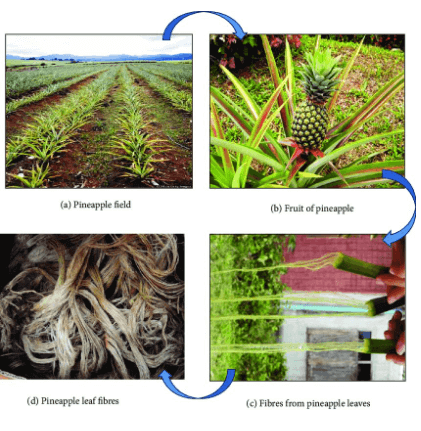
“At Svala, sustainability and style go hand in hand. Pinatex allows us to craft durable handbags that reduce environmental impact while delighting our customers.” — Svala Founder
Apple Leather: From Waste to Wow
Apple leather, derived from apple pomace (a juice industry byproduct), blends sustainability with luxury. Combined with polyurethane, it’s soft yet sturdy, ideal for eco-friendly toiletry bags and wallets. Its lower carbon footprint makes it a standout choice for hair care or essential oil brands seeking eco-conscious packaging solutions.

Banana Leather: Nature’s Biodegradable Gem
Crafted from mycelium, mushroom leather is renewable and biodegradable, offering a petroleum-free alternative to traditional leather. It’s perfect for totes or small accessories in the maternal and infant industry, where natural, safe materials are paramount.
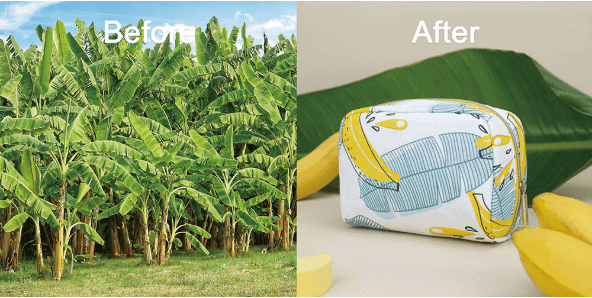
Cactus Leather: Desert-Derived Durability
Sourced from the nopal cactus, this leather alternative thrives with minimal water and no pesticides. Used in handbags and crossbody bags by brands like Poppy Barley, it’s a sustainable option for outdoor brands looking to merge ethics with rugged appeal.“
“Cactus leather lets us offer vegan, eco-friendly alternatives without compromising quality or design—perfect for timeless beauty accessories.” — Poppy Barley CEO
Recycled Fabrics (e.g., Econyl): Closing the Loop
Econyl, made from recycled ocean plastic and fabric waste, operates in a closed-loop system that slashes water use and waste. While it’s less suited for frequently washed items due to microfiber emissions, it shines in outerwear or shoe linings—great for outdoor brands partnering with Rivta.
Natural Fibers: Hemp, Linen, and Bamboo
These fibers are hypoallergenic and gentle, making them a natural fit for maternal and infant care products.
- Hemp: Carbon-negative and low-maintenance, hemp is ideal for scrunchies or caps in hair care lines.
- Linen: Made from flax, this low-impact fabric absorbs CO2 and suits lightweight bags or linings.
- Bamboo (Lyocell): Processed sustainably, bamboo offers softness for eco-friendly linings in skincare accessory kits.
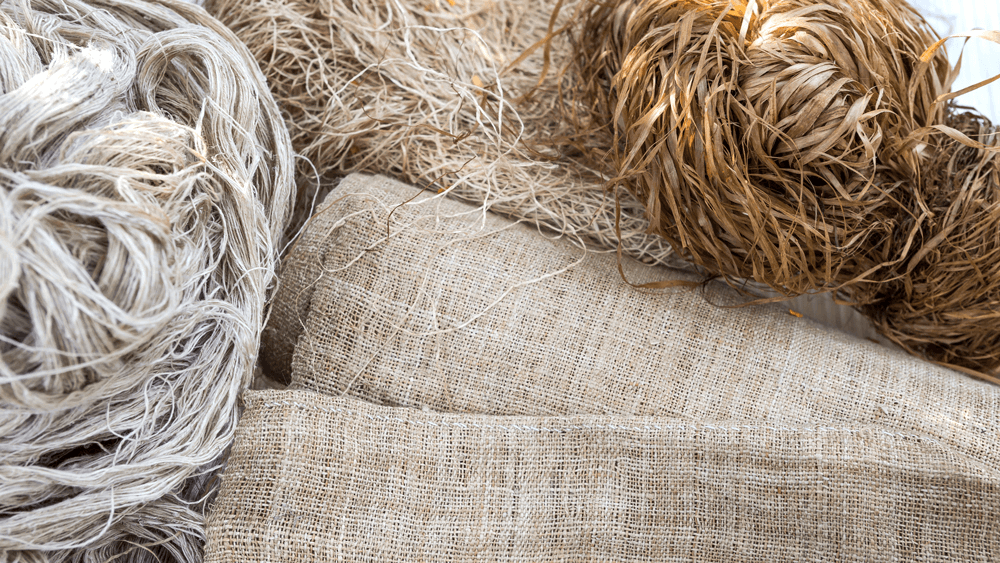
Market Trends and Growth: A Booming Opportunity
The sustainable fashion market, including beauty accessories, is on a steep upward trajectory. Valued at $8.1 billion in 2024, it’s projected to soar to $33.1 billion by 2033, with a CAGR of 22.9%. Here’s what’s driving this growth:
- Consumer Demand: Eco-aware buyers—especially in beauty and skincare—are prioritizing sustainable products.
- Material Innovations: Fabrics like Bananatex (banana plant-based) and CIRCULOSE (textile waste-derived) are expanding possibilities.
- Regulatory Push: Governments are incentivizing eco-friendly production, aligning with global green goals.
For Directors of Product Development and buyers, this data signals a clear opportunity: beauty accessories made with eco-fabrics are not just a niche—they’re the future.
Table: Projected Market Growth
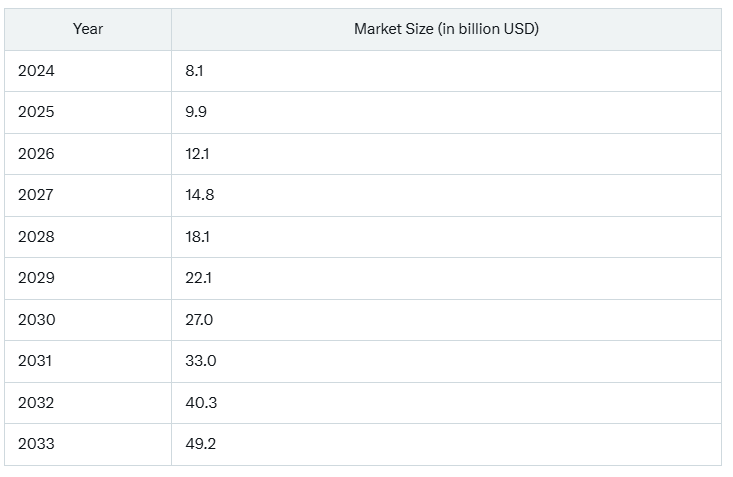
(Source: Estimated based on CAGR of 22.9%)
Leading Brands Pioneering Eco-Fabrics
Innovative brands are setting the benchmark for eco-fabrics in beauty accessories:
- Svala: Uses Pinatex and BioVeg for vegan handbags, perfect for skincare brands.
- Poppy Barley: Crafts timeless bags with cactus leather, appealing to beauty and outdoor markets.
- Carry Courage: Offers cork fabric handbags—durable and plastic-free—for essential oil storage.
- Terra Thread: Produces organic cotton bags, supporting fair trade for maternal care lines.
- Elvis & Kresse: Repurposes fire hoses into lightweight, durable accessories for trade companies.
These trailblazers prove that sustainability enhances brand appeal, offering inspiration for your next product line.
Benefits for Brands and Consumers
For Brands: A Competitive Edge
- Market Differentiation: Stand out with unique, eco-friendly offerings that attract eco-conscious CEOs and buyers.
- Consumer Loyalty: Build a dedicated customer base that values your sustainability commitment.
- Regulatory Compliance: Stay ahead of environmental standards, ensuring long-term viability.
For Consumers: Tangible Gains
- Environmental Impact: Lower their carbon footprint with every purchase.
- Health Benefits: Enjoy hypoallergenic, chemical-free materials—ideal for sensitive skin in beauty and infant care.
- Unique Style: Access accessories with distinctive textures that tell a sustainability story.
Rivta’s Role: Your Partner in Sustainability
At Rivta, we’re more than an eco-friendly cosmetic bag factory or an eco-friendly toiletry bag wholesale—we’re your collaborator in crafting sustainable beauty accessories. Our products, from cosmetic bags to jewelry boxes, leverage eco-fabrics like Pinatex, apple leather, and recycled materials. Here’s how we add value:
- Custom Solutions: Tailored designs that balance eco-materials with durability for your industry—be it skincare or outdoor.
- Eco-Driven Expertise: Certifications like Fair Trade and Organic ensure your products meet green standards.
- Transparent Partnerships: Clear supply chain ethics and carbon-neutral shipping build trust with your audience.
- Client-First Support: Responsive service and cost-effective pricing make collaboration seamless.
Table: Eco-Fabrics Comparison
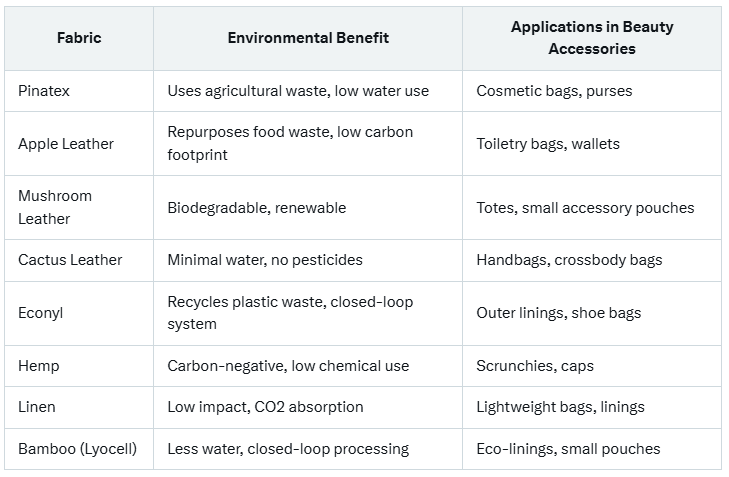
Shape the Future with Rivta
The rise of eco-fabrics in beauty accessories is a revolution your brand can’t afford to miss. From Pinatex to cactus leather, these materials offer sustainability, style, and market potential that align with the values of CEOs, founders, and buyers across skincare, beauty, and beyond. As the sustainable fashion market surges toward $33.1 billion by 2033, now is the time to act.
At Rivta, we’re here to help you lead this charge as eco-friendly cosmetic bag factory. Our innovative, eco-friendly solutions empower your brand to meet consumer demand, exceed regulatory expectations, and create products that inspire. Let’s collaborate to make sustainability your signature style—because when you choose eco-fabrics, you choose a brighter, greener future for all.
Contact us today at https://rivta-factory.com/ to explore how Rivta can elevate your brand with sustainable beauty accessories.
Related News
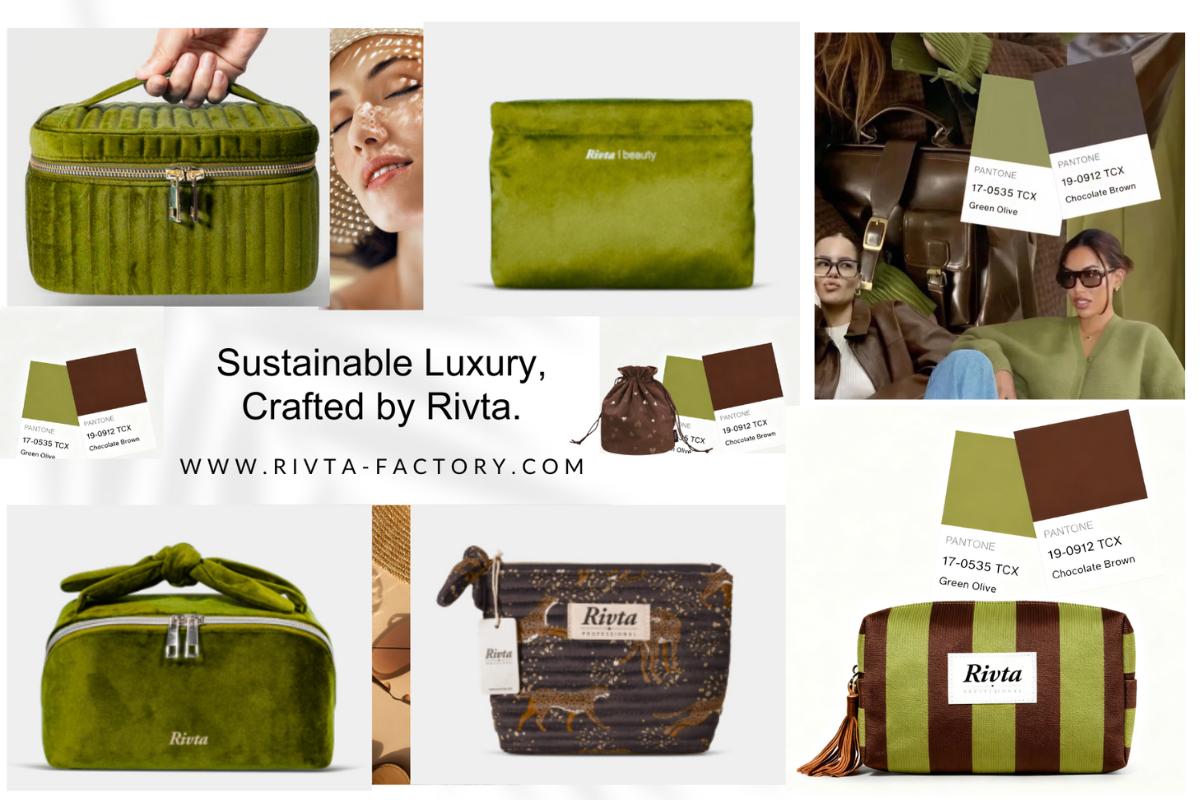
Clear Cosmetic Bags Wholesale: The B2B Buyer's Guide to Bulk Pricing & Factory Sourcing?
Sep .26.2025
Finding a reliable supplier for clear cosmetic bags can feel overwhelming. You face inconsistent quality and confusing pricing, making it hard to trust you're getting the best value for your brand.
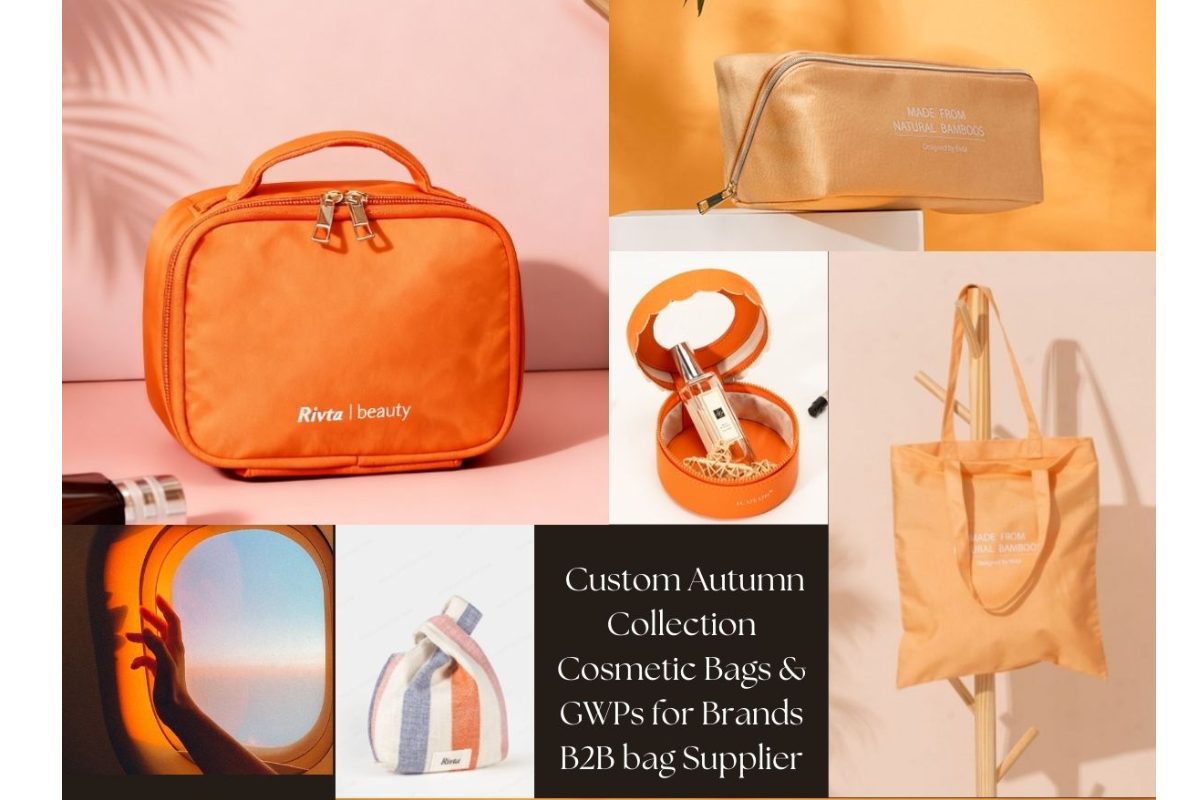
Buying Cosmetic Bags in Bulk: The Complete 2025 Guide for B2B Buyers?
Sep .25.2025
Sourcing quality cosmetic bags can feel overwhelming. Finding a reliable, eco-conscious partner is even harder. This guide will help you navigate the process and find the perfect match for your brand.
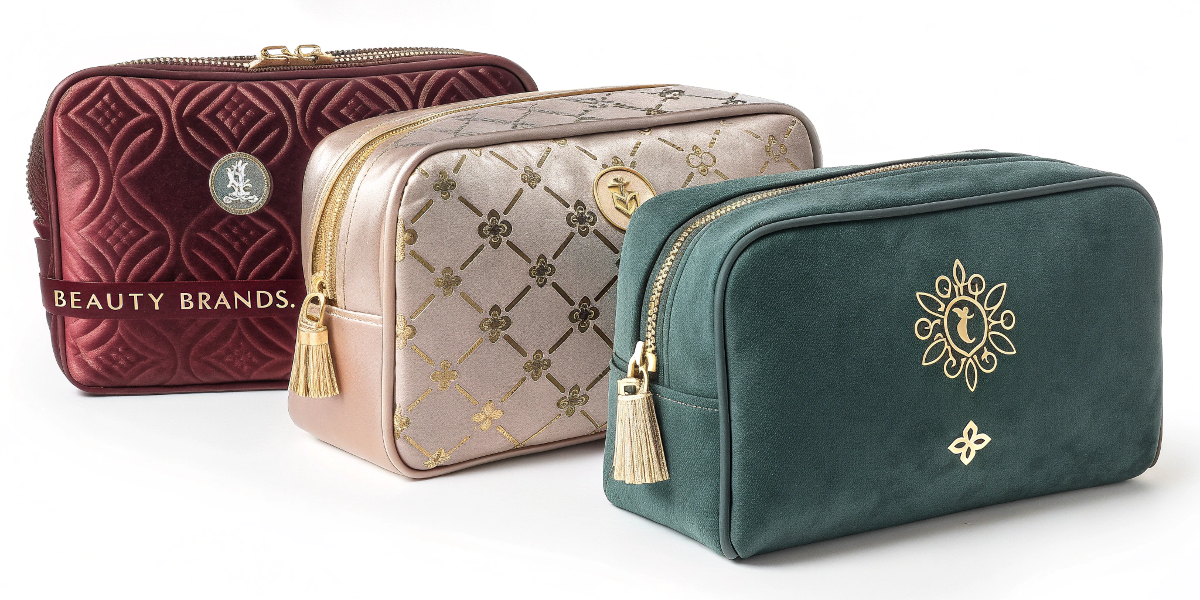
The Top 7 Reasons Why Partnering with a Sustainable Custom Bag OEM Elevates Your Brand
Sep .24.2025
In a saturated market, your beauty brand needs to stand out. A high-quality, custom gift-with-purchase (GWP) is a proven way to capture consumer attention and build loyalty far beyond the initial sale.
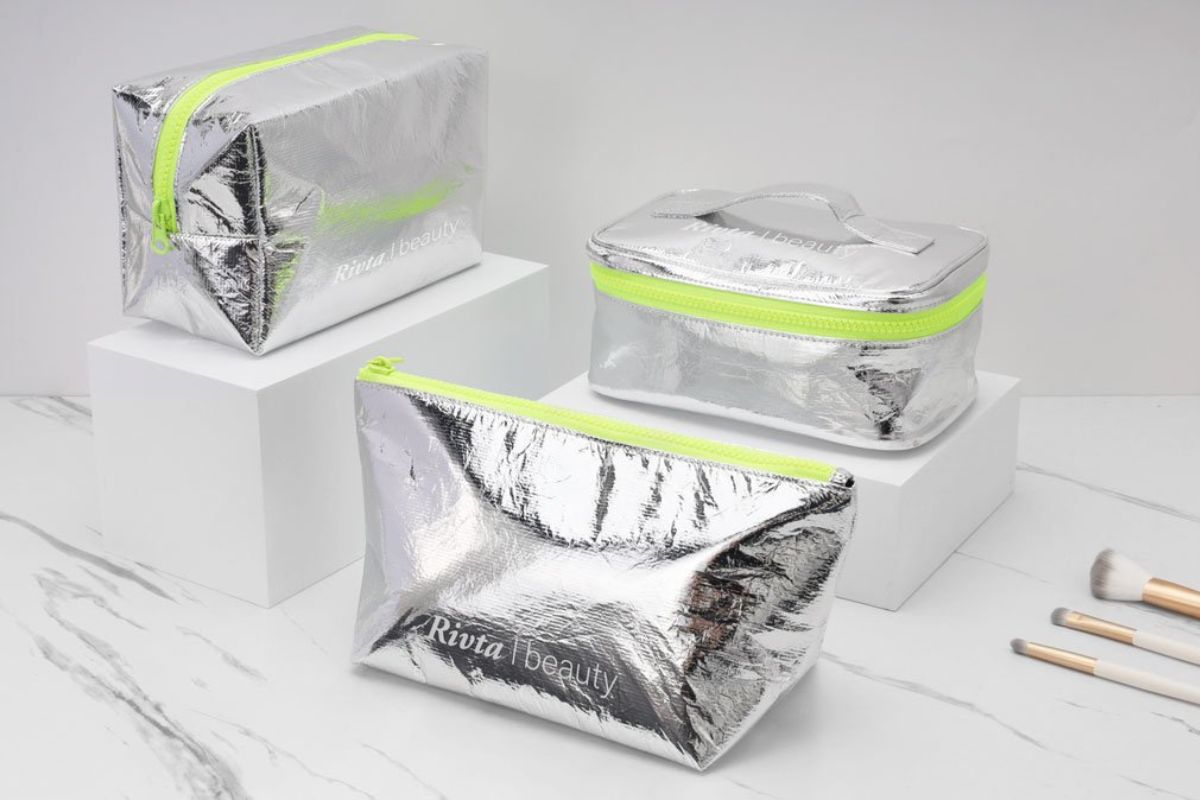
How to Find the Ultimate Toiletry Bag Manufacturer for Your US Business in 2025?
Sep .24.2025
Finding a reliable supplier can feel impossible. You're dealing with inconsistent quality, poor communication, and delays. This guide will show you how to find the perfect manufacturing partner for your brand.

















